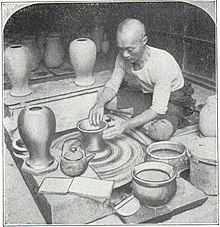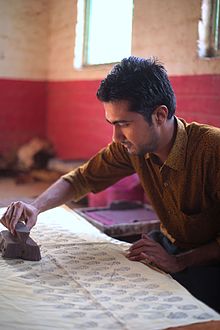
Back Handwerk ALS حرفة Arabic Handweak BAR Рамяство BE Рамяство BE-X-OLD Řemeslo Czech Crefft CY Håndværk Danish Handwerk German Τεχνική Greek
This article needs additional citations for verification. (April 2017) |



A craft or trade is a pastime or an occupation that requires particular skills and knowledge of skilled work. In a historical sense, particularly the Middle Ages and earlier, the term is usually applied to people occupied in small scale production of goods, or their maintenance, for example by tinkers. The traditional term craftsman is nowadays often replaced by artisan and by craftsperson.
Historically, the more specialized crafts with high-value products tended to concentrate in urban centers and their practitioners formed guilds. The skill required by their professions and the need to be permanently involved in the exchange of goods often demanded a higher level of education, and craftspeople were usually in a more privileged position than the peasantry in societal hierarchy. The households of artisans were not as self-sufficient as those of people engaged in agricultural work, and therefore had to rely on the exchange of goods. Some crafts, especially in areas such as pottery, woodworking, and various stages of textile production, could be practiced on a part-time basis by those also working in agriculture, and often formed part of village life.
When an apprentice finished their apprenticeship, they became a journeyman searching for a place to set up their own shop and make a living. After setting up their own shop, they could then call themselves a master of their craft.
This stepwise approach to mastery of a craft, which includes the attainment of some education and skill, has survived in some countries to the present day. But crafts have undergone deep structural changes since and during the era of the Industrial Revolution. The mass production of goods by large-scale industry has limited crafts to market segments in which industry's modes of functioning or its mass-produced goods do not satisfy the preferences of potential buyers. As an outcome of these changes, craftspeople today increasingly make use of semi-finished components or materials and adapt these to their customers' requirements or demands. Thus, they participate in a certain division of labour between industry and craft.